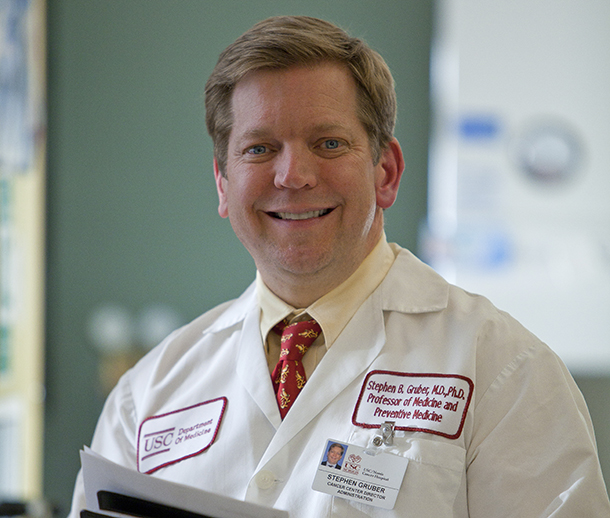The USC Norris Comprehensive Cancer Center has again united with each of the 69 National Cancer Institute (NCI)-designated cancer centers in issuing a joint statement in support of recently revised recommendations from the Centers for Disease Control and Prevention (CDC) for the human papillomavirus (HPV) vaccine. These guidelines recommend that children aged 11 to 12 should receive two doses of the HPV vaccine at least six months apart. Adolescents and young adults older than 15 should continue to complete the three-dose series.
“The updated guidelines provide a safe and effective way for parents to protect their children from easily preventable cancers,” said Stephen Gruber, MD, PhD, MPH, professor of medicine and H. Leslie Hoffman and Elaine S. Hoffman Chair in Cancer Research at the Keck School of Medicine of USC and USC Norris director. “Our hope is that this will encourage more parents to vaccinate their children against HPV, which would dramatically decrease the incidence rates for cervical cancer, as well as other cancers that affect both men and women.”
According to the CDC, incidence rates of HPV-associated cancers have continued to rise, with approximately 39,000 new HPV-associated cancers now diagnosed each year in the United States. Although HPV vaccines can prevent the majority of cervical, anal, oropharyngeal (middle throat) and other genital cancers, vaccination rates remain low across the U.S., with just 41.9 percent of girls and 28.1 percent of boys completing the recommend vaccine series.
Research shows there are a number of barriers to overcome to improve vaccination rates, including a lack of strong recommendations from physicians and parents not understanding that this vaccine protects against several types of cancer.
“Physicians and researchers must educate parents and the public about the importance of vaccinating children and adolescents against HPV,” Gruber said. “With this vaccine, we have the ability to eradicate cervical cancer and other cancers, and our advocacy is crucial for increasing vaccination rates nationwide.”
In an effort to overcome these barriers, NCI-designated cancer centers have organized a continuing series of national summits to share new research, discuss best practices, and identify collective action toward improving vaccination rates.
The original joint statement, published in January 2016, was the major recommendation from a summit hosted at The University of Texas MD Anderson Cancer Center in November 2015, which brought together experts from the NCI, CDC, American Cancer Society and more than half of the NCI-designated cancer centers.
“We have been inspired by the White House Cancer Moonshot to work together in eliminating cancer,” said Electra Paskett, PhD, associate director for population sciences at The Ohio State University Comprehensive Cancer Center — Arthur G. James Cancer Hospital and Richard J. Solove Research Institute (OSUCCC — James) Cancer Control Research Program. “Improving HPV vaccination is an example of an evidence-based prevention strategy we can implement today to save thousands of lives in the future.”
The updated statement is the result of discussions from the most recent summit, hosted this summer by OSUCCC — James. Nearly 150 experts from across the country, including Gruber and other USC Norris faculty, gathered in Columbus to present research updates and plan future collaborative actions across NCI-designated cancer centers.
— Mary Dacuma


